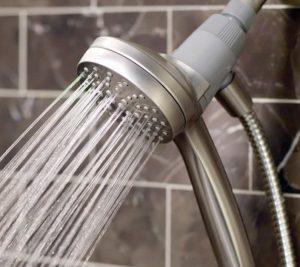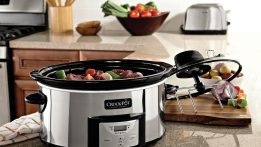 While many can only dream of the day they’ll retire, the dream is quickly becoming a reality for baby boomers. According to the U.S. Census Bureau, roughly 20 percent of Americans are age 65 or older. As more people get to retirement age, the problem of what to do about living arrangements comes to mind. Although your needs as a homeowner might change in years to come, retirement won’t necessarily mean relocating to a senior community. More and more, adults choose to “age in place,” remaining in their current home even after retirement. Here are a few ways to add extra convenience today that will ensure a safe home in the future.
While many can only dream of the day they’ll retire, the dream is quickly becoming a reality for baby boomers. According to the U.S. Census Bureau, roughly 20 percent of Americans are age 65 or older. As more people get to retirement age, the problem of what to do about living arrangements comes to mind. Although your needs as a homeowner might change in years to come, retirement won’t necessarily mean relocating to a senior community. More and more, adults choose to “age in place,” remaining in their current home even after retirement. Here are a few ways to add extra convenience today that will ensure a safe home in the future.
Keep it simple. As you continually repair and replace items in and around your home, think long term and invest pennies now instead of dollars later. While the prospect of upgrading multiple areas of your home to include safety features sounds daunting, it’s much more manageable than it might seem.
Driveways and Walkways
If you have tree roots pulling up or cracking your driveway or walkways, start making assessments and look over the paths you travel on your way into the house. Notice whether or not the dimensions of these paths are suitable for wheelchairs, walkers, or even crutches. Decide whether the driveway and sidewalks leading up to the door are handicapped accessible. Consider the maneuverability of front steps and porches and form a plan that suits your individual situation best. While installing a ramp might not be feasible or suitable for your home, have a game plan in case it is necessary in the future.
Common Areas
When thinking about your long term goals, start with the layout of your home. In a perfect world, the bathroom, kitchen and bedroom would be on the first floor. If your home wasn’t built with a first-floor bedroom or bath and stairs have to be a part of your plan, install no-slip strips on the edge of each stair to help limit trips and falls. No-slip strips are readily available at most home improvement stores.
Next, make sure there’s plenty of room to move. Aim to have doorways that are at least 32 inches wide at minimum, although 36 inches is ideal. Tight corners and doorways are a challenge for those with walkers or canes, so planning for this now will prevent extra stress in the event that these steps become necessary for you or a loved one in your home. For stress-free opening and closing, change out door handles from traditional knobs to lever handles for an easier grip.
Once you’ve addressed corners and doorways, focus on flooring. Installing carpeting can provide warmth and cushioning for you to enjoy now and offers an added element of safety and maneuverability. Choose a low pile carpet to minimize tripping—higher pile carpet is a safety hazard. Area rugs are less than ideal as well, as unsecured rugs and loose carpet are one of the main causes for slips and falls. If you really can’t part with your area rug, use carpet tape to secure it to the floor.
Bath Upgrades
If you can only update one place in your home, make the bathroom your top priority. The bathroom typically offers the most opportunities for injury. In fact, the Centers for Disease Control and Prevention estimate that roughly 234,000 injuries occur annually in the bathroom alone. When the time comes for replacing the toilet, consider adding one that sits at a very comfortable height for easy sitting and standing. Not only will this add safety down the road, it’ll add comfort now. An extra immediate benefit is added safety for any guests you might have with limited mobility. After all, any day where a relative doesn’t need rescuing from a low toilet is a good day.
An easy and effective way to incorporate safety is to install grab bars. Today’s grab bars are stylish and fit in seamlessly with your space rather than seeming obtrusive and sterile. Install them near the toilet as well as in the shower. Some models like corner shelves with grab bars have functionality, adding an element of additional storage you can take advantage of immediately. Bars like these will provide room to store your shampoo and will help keep you safe while entering and exiting the bath. Check home improvement stores for options that are fashionable as well as functional. If you already have plans to update your bathroom, consider that adding a grab bar now is likely your ideal option. If an extra few dollars now saves you thousands later and means you don’t have to tear up the wall twice, it’s most certainly a worthwhile investment.
 In the shower, a handheld showerhead like the Magnetix Engage showerhead from Moen is an ideal option for those who may want to be seated while they bathe. These are also incredibly handy for cleaning the shower because they eliminate bending and squatting, which can be hard on joints. With this upgrade you’ll be able to reap the immediate benefits of the convenience it offers as well. Time saved cleaning the bathroom is time spent doing something more enjoyable. With the vanity, choose a faucet with lever handles as they’re easiest to grip and turn. Consider installing sconces near the mirror for additional lighting.
In the shower, a handheld showerhead like the Magnetix Engage showerhead from Moen is an ideal option for those who may want to be seated while they bathe. These are also incredibly handy for cleaning the shower because they eliminate bending and squatting, which can be hard on joints. With this upgrade you’ll be able to reap the immediate benefits of the convenience it offers as well. Time saved cleaning the bathroom is time spent doing something more enjoyable. With the vanity, choose a faucet with lever handles as they’re easiest to grip and turn. Consider installing sconces near the mirror for additional lighting.
Finally, do a full walk-through of your home, paying close attention for hazards in the more heavily traveled parts of the house where you and your loved ones spend most of your time. Consider your options and form a more detailed plan of how you’d like to address specific issues in your home and what degree of upgrading is appropriate and financially feasible. Think about your individual budget and how you can best use it to fit your home. Allocate funds and prioritize your improvements so that the most pressing hazards are first on the list for upgrades.
In general, the most important advice for any room in your home is to think efficiently. Locate items that work together near each other to make tasks easier today, tomorrow and in the years to come. While waiting until limited mobility becomes an issue means overhauling at once, taking care of these improvements now allows you to change your home in stages for less disruption. Not only do these changes offer added immediate convenience, they’ll also ensure safety and increased quality of life and comfort for both you and your guests in the future. ![]()
By Jennifer Stinnett







